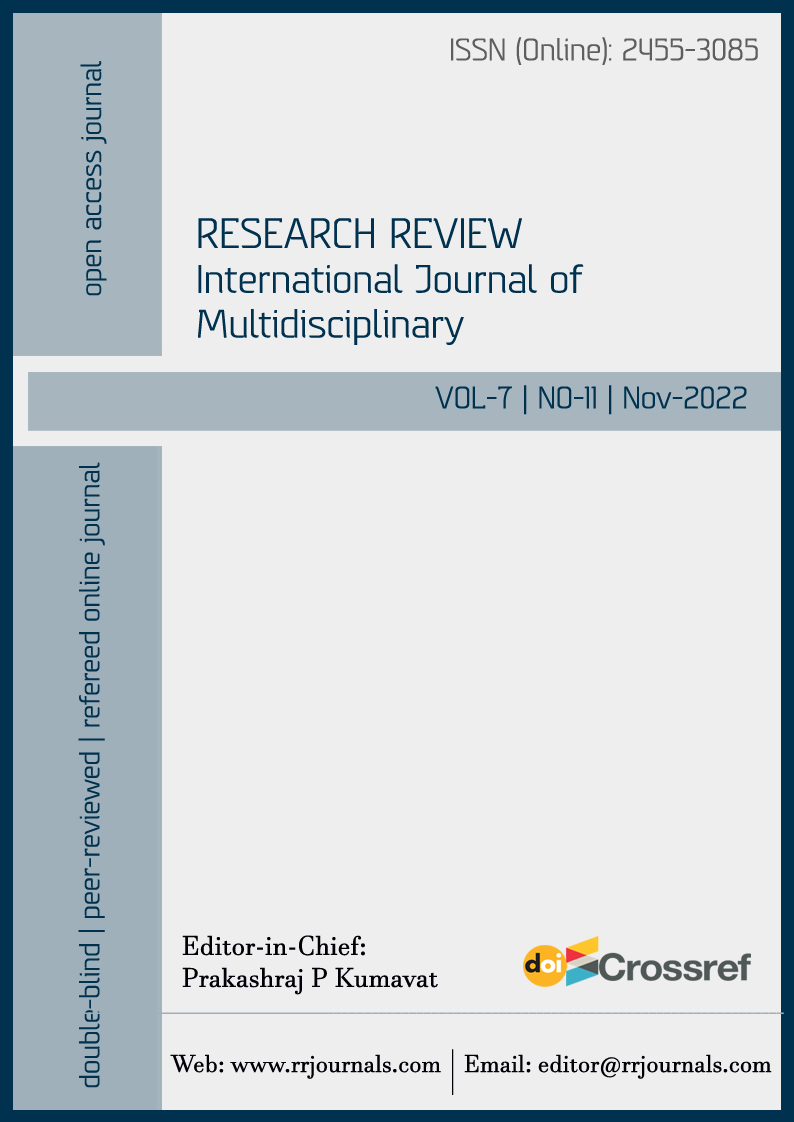Subaltern Studies: An Historical Study
DOI:
https://doi.org/10.31305/rrijm.2022.v07.i11.022Keywords:
History, Subltern, common people, elite class, Historical record, HistoriographyAbstract
A people's recorded fight for greater freedom and a more profound understanding of the human condition is history. Everyone has the potential to be a hero. Indeed, societal cataclysms that have altered the course of history have occurred on multiple occasions as a result of popular initiative. Because human beings are the driving force behind all historical events, the subaltern perspective revolves around them. Opponents of the dominant, elitist approach to studying and understanding the past argue that subaltern studies of history provide a better alternative. This approach to historical analysis, sometimes called "history from below," seeks to build the paradigm of subaltern consciousness as it has existed in many forms, locations, and eras. History is being rewritten with the new "subaltern studies" movement.
References
Chakrabarty, D.2000 “Subaltern Studies and Postcolonial Historiography.” Nepantla: Views from South 1(1):
Chaturvedi, V. 2000. Mapping Subaltern Studies and the Postcolonial London and New York: Verso.
David E. Ludden, ‘Introduction: A Brief History of Subalternity,’ in Reading Subaltern Studies, 7
Dipesh Chakrabarty, ‘Subaltern Histories and Rationalism’, Habitations of Modernity, Chicago: University of Chicago Press, 2002,
Gayatri Chakravorty Spivak, Can the Subaltern Speak? In Cary Nelson and Lawrence Grossberg(eds), Marxism and the Interpretation of Culture, Chicago: University of Illinois Press, 1988.
Gramsci, A. 1971 Selections from Prison Notebooks, trans and edited by Q. Hoare and G.N. Smith. New York: International Publishers.
Javeed Alam, ‘Peasantry, Politics and Historiography: Critique of New Trend in Relation to Marxism,’ in Reading Subaltern Studies,
O’Hanlon, R. 2000, “Recovering the Subject: Subaltern Studies and Histories of Resistance in Colonial South Asia.”pp. 72-115 in Vinayak Chatervedi, ed., Mapping Subaltern Studies and the Postcolonial. London and New York: Verso.
Radhakrishnan, S. 2005, “Time to Show Our True Colors’: the Gendered Politics of Indianness in Post-apartheid South Africa.” Gender and Society 196.
Ranajit Guha, Introduction, Subaltern Studies I, Delhi: Oxford University Press, 1982,
Ranajit Guha, ‘On Some Aspects of the Historiography of Colonial India’, in Subaltern Studies No.1,1.
Said, E. 1988 Foreword in R.Guha and G. Spivak, eds., Selected Subaltern Studies, Oxford University Press, Delhi.
Sangeeta Singh et al., ‘Subaltern Studies II: A Review Article,’ in Reading Subaltern Studies.
Scott, J. 1985, Weapons of the Weak: Everday Forms of Peasant Resistance. New Haven, CT: Yale University Press.
Simona Sawhney, ‘Subaltern Studies XI (Review); Journal of Colonial and Colonial History, Vol, 3, No.3, 2002.
Spivak, G.C. 1988, “Subaltern Studies: Deconstructing Historiography.” in R. Guha and G. Spivak, eds., Selected Subaltern Studies., Oxford University Press, Delhi.
Sumit Sarkar, ‘Orientalism Revisited: Saidian Frameworks in the Writing of Modern Indian History, ‘Oxford Literary Review Vol. 16 No. 1-2, (1994)
Sumit Sarkar, ‘The Fascism of the Sangth Parivar’, Economic and Political Weekly of India, 20 January, 1993
Suneet Chopra, ‘Review: Missing Correct Perspective; Social Scientist, Vol. 10, No.8, (1982)
Downloads
Published
How to Cite
Issue
Section
License

This work is licensed under a Creative Commons Attribution-NonCommercial 4.0 International License.
This is an open access article under the CC BY-NC-ND license Creative Commons Attribution-Noncommercial 4.0 International (CC BY-NC 4.0).



